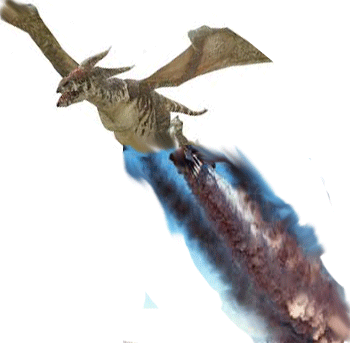By Bill Freeman –
 As Alice in Wonderland said, “This is getting curiouser and curiouser.” We are talking, of course, about the Porter Airlines announcement that they are going to buy a fleet of CS100 jets from Bombardier. Porter’s home base is the Island Airport (called the “Billy Bishop City Centre Airport.”) At the present time only turbo props are allowed at the Island Airport and Porter flies the Bombardier Q400. Jets are banned at the Island Airport according to the Tripartite Agreement.
As Alice in Wonderland said, “This is getting curiouser and curiouser.” We are talking, of course, about the Porter Airlines announcement that they are going to buy a fleet of CS100 jets from Bombardier. Porter’s home base is the Island Airport (called the “Billy Bishop City Centre Airport.”) At the present time only turbo props are allowed at the Island Airport and Porter flies the Bombardier Q400. Jets are banned at the Island Airport according to the Tripartite Agreement.
To allow jets, this agreement would have to be amended by all three parties to the agreement: the federal government, the Toronto Port Authority and the City. No one knows the position of the city, but it promises to be a very lively debate. Porter is a private company so we have no knowledge of the current financial picture of the company, but when they attempted an IPO in the spring of 2010 the financials showed they had serious losses. The IPO was withdrawn and none has been attempted since. (See the speculation by “The Bean” a former airline executive that is attached.) So where will the company get the money to buy the planes? We have to assume that it will come thanks to the federal government loan guarantee program.
Porter is flying at a little better than 60% seat occupancy on average and in the last four months their load factor has actually dropped from the year before. Both Air Canada and West Jet have loads of over 80%. Will buying new jets with even greater seating capacity be a smart move when they cannot fill the planes that they currently own?
But can the Toronto Island Airport handle these jets? That seems very doubtful. The longest runway on the Island is 4000 feet. The CS100 appears to need 4,800 feet (at 130,000 pounds) to take-off and 4499 feet for landing even when the CS100 is carrying 112,000 pounds. Porter is touting a crippled version of the plane that requires 3,999 feet for take-off and 4,440 for landing. That means the runway on the Island Airport will have to be lengthened.
The Q400 currently used by Porter is assembled in Toronto, but none of the CS100 is made in this city. Shenyang Aircraft Corp. in China manufactures the fuselage. Other portions of the plane are made in Belfast, Ireland and final assembly is at Mirabel in Quebec.
The Island Airport presently is at the limit of the number of take-offs and landings that are permitted under the regulations. To expand this would be difficult because of the limitations of the airport. Again, any expansion would require an amendment to the Tripartite Agreement.
So what is this announcement all about? Is the Bean correct and these are soft orders designed to make both Porter and Bombardier look good? The Globe and Mail has speculated that “Porter could also be looking to deploy the CSeries from alternate airports, including Montreal, to destinations in the US and significantly expand its footprint on those routes.”
The point is we just don’t know. So the more speculation and the more news makes this all just “curiouser and curioiuser,” as Alice said.
In the meantime Porter’s current operation at the Island Airport is causing havoc for the residents of the Waterfront. The Island Airport expansion is incompatible with the live-work neighbourhoods that are emerging along the entire water’s edge and introducing jets will make things far, far worse.
Toronto’s Waterfront redevelopment project is the largest of its kind in North America. Billions of private and public sector dollars have been and will be spent to transform this part of the city. Downtown Toronto has doubled in population in the last 10 years. Toronto Islands, the harbour and Lake Ontario are the greatest recreational resources in the city. All of this is being threatened by the expansion of this airport.
CommunityAIR will use every effort to stop jets at the Island Airport and any further airport expansion.
For more comment contact Bill Freeman, 416 203-2956 billfreeman@rogers.com
Bill Freeman
Spokesperson, CommunityAIR
(416) 203-2956
billfreeman@rogers.com
http://www.communityair.org
#7 Thebean
Posted Today, (9 April 2013) 05:39 AM
It’s one thing to order new airframes, it’s another to take delivery of them. Wardair ordered a dozen MD88’s in 1989 but they never saw the light of day.
An order is useful to both parties for a number of reasons.
BBD needs to generate an order book for the, thus far, slow selling C Series. Who better than to have Porter, a current Bombardier customer who, conveniently, are privately held, to pump up the order book. I doubt Airbus or Boeing would be as willing to come to the party under these circumstances. There are soft orders, then there are marshmallow orders.
Porter’s investors want out and there are no takers at the price being bandied around. Porter, which, to date, has yet to report any meaningful, verifiable profit over it’s history, likely feels the need to raise the stakes now that Encore is about to launch and will have at least 40, and I suspect closer to 65 Q400’s within about 7 years. As it stands, Porter is in a stagnant phase, with l/f’s shrinking and capacity flat. When it comes to airlines, these two scenarios, combined with a history of negligible or worse profitability, are the kiss of death.
I suspect their thinking is that by threatening to go bigger, one of the two obvious dance partners will come to the table. The problem is, unless one of the potential dance partners decides to go with the C Series themselves, no one is going to want to acquire Porter with a fleet of orphan aircraft, (the same issue Wardair faced in 1989 with the MD88’s). Even if, lets say, either AC or WJ went with C Series as a narrowbody replacement, Porter’s negotiating position would be pretty weak. It’s always best to have two boys chasing the pretty girl.
Knowing both WJ’s affinity for NG’s and AC’s need to replace the current Airbus fleet together with the exponentially larger market for said airframe should they not be required, if Porter were serious, they’d have been far smarter to do a deal with Boeing, were Boeing willing to play along with the charade. I suspect the two larger airframers weren’t and Porter figured the ruse wasn’t going to be effective with an order of SSJ’s.
The C series might achieve lower trip costs, but its the unit costs that really matter and they won’t come anywhere close to those of the 737NG family, let alone the MAX or the NEO. If Porter wants to come to the party, they better have the lowest cost bananas at Safeway, or uncover a ton of markets where there is no competition so that the fares necessary to create sustainable profits at their cost structure can be achieved. I can’t think of a single, meaningful market that has these characteristics, and lets face it, there is no way the C Series is going to be operating out of YTZ.
Both AC and WJA have had a strong run in the public financial markets over the past 8 months as have most US carriers. Granted, AC remains a fraction of its issue price about 8 years ago, but WJA is trading at all time highs these days.
This clearly indicates that investors currently have a strong appetite for investment in airline ventures, provided there is both a history of profitability and a very strong liklihood of said trend continuing on for the foreseeable future. If Porter were profitable, I can think of no better time over the past 6 years to do an IPO and raise $300-$500m of fresh capital.
That has not occurred and the spring 2013 IPO season is well underway. That speaks volumes, especially given that Porter’s shareholders have shown a willingness to go the IPO route in the past in order to cash out. BBD is going to be looking for pre-delivery payments pretty soon and that cash has to come from somewhere.
I’m from Missouri. Show me.
 TheBulletin.ca Journal of Downtown Toronto
TheBulletin.ca Journal of Downtown Toronto

